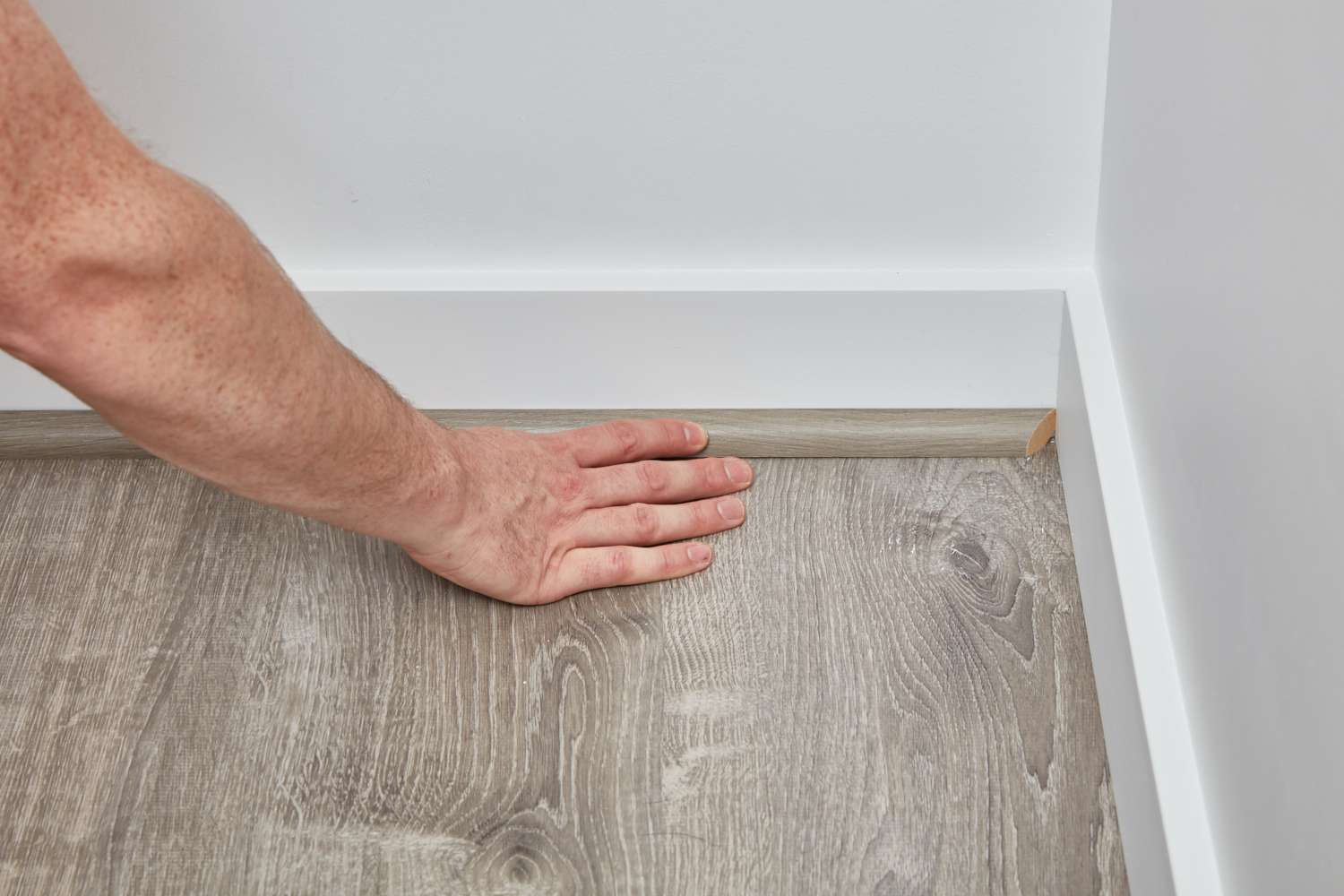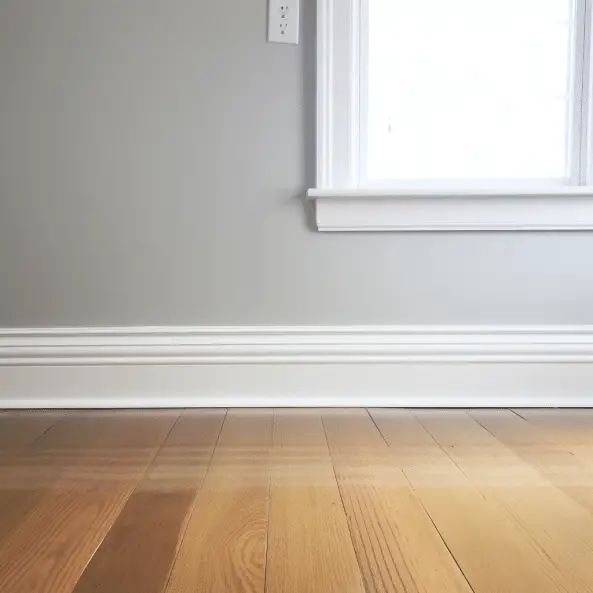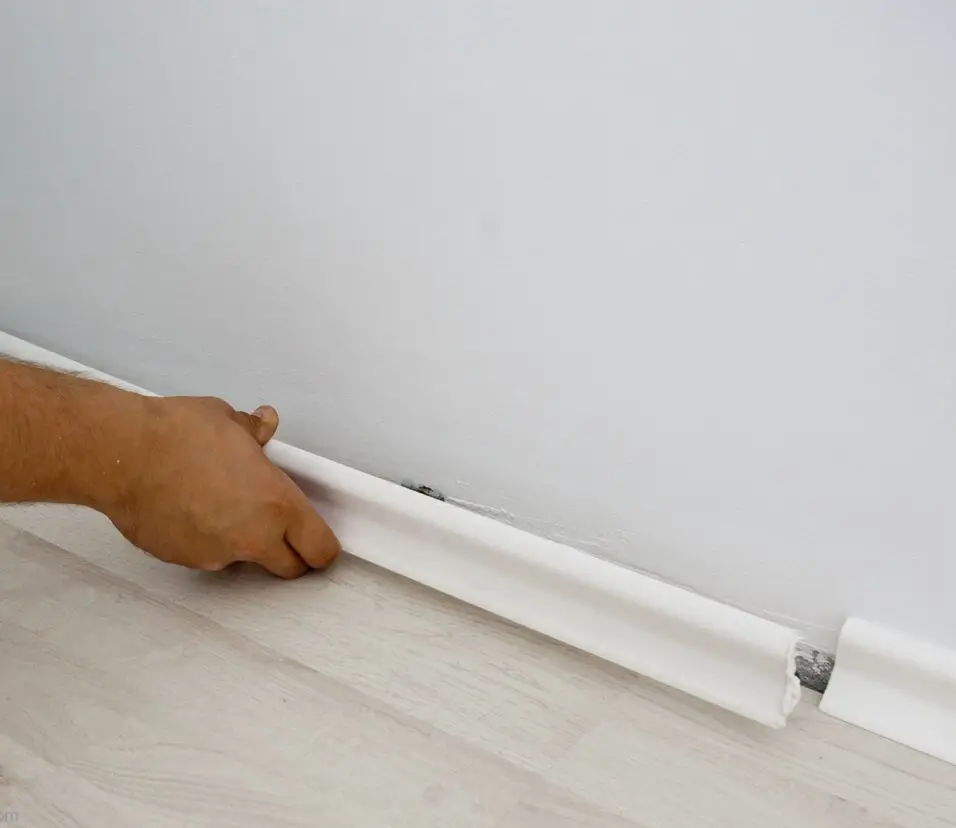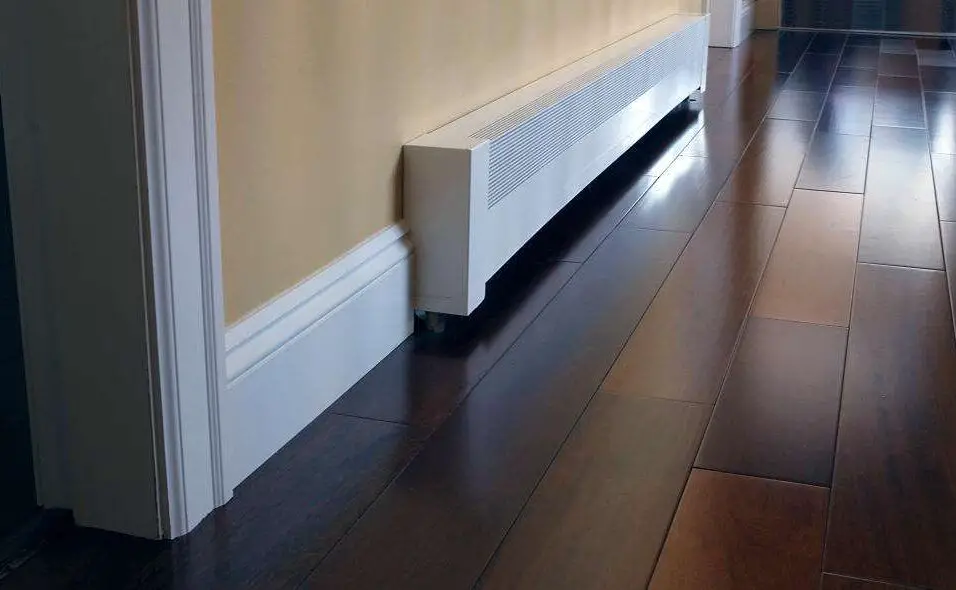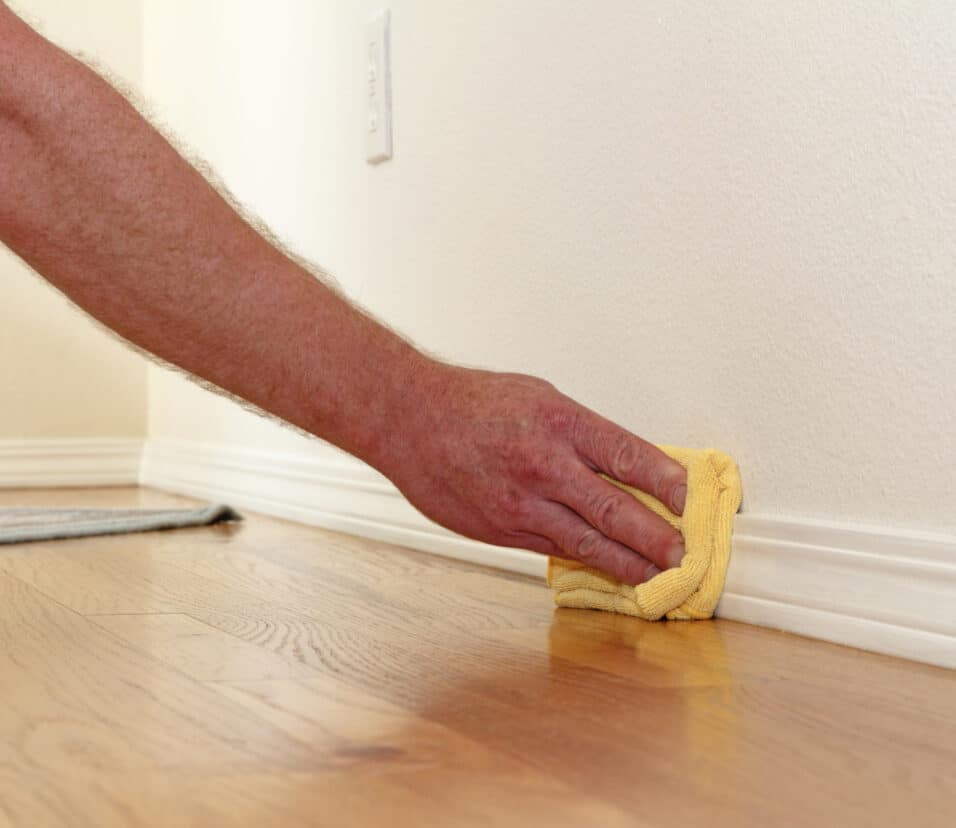How To Fix Baseboards
Introduction
How To Fix Baseboards: The guide will then delve into the different repair methods based on the specific problems you’re facing. Whether you’re dealing with gaps between the baseboard and the wall, unsightly nail pops, or cracks that need patching, we’ve got you covered. We’ll walk you through each step of the repair process, complete with illustrations and troubleshooting advice. Over time, baseboards can become loose, cracked, or damaged due to wear and tear or other factors.
Whether you’re a seasoned DIY enthusiast or a beginner looking to tackle some home repairs, this comprehensive guide will walk you through the steps to effectively fix and restore your baseboards. For more challenging repairs or situations where the baseboard corners needs to be completely replaced, we’ll guide you through the removal process.
Selecting suitable replacement baseboards, and how to properly install and finish them to seamlessly blend with your existing decor. Throughout the guide, safety will always be a top priority. We’ll provide safety tips to follow, especially when using tools and working with certain materials, ensuring you undertake the repairs with confidence and caution.

How do you fix a gap between baseboards and floors?
If you’re looking for a quick fix and looks aren’t the most important factor, caulk is a great option. You will want to line the floor with blue painter’s tape to minimize cleanup. You’ll want to use a paintable latex silicone caulk to fill the gap. Once the caulk is dried, paint the caulk to match the baseboards.
Before diving into the repair process, take a moment to inspect the gap carefully. Understanding the size and nature of the gap will help you determine the best approach for fixing it.
For small gaps in painted baseboards, use a paintable caulk that matches the color of your baseboard. Load the caulk gun with the caulk and apply a thin bead of caulk along the gap. Smooth the caulk using a putty knife, ensuring it is evenly distributed and fills the entire gap.
For larger gaps in stained or natural wood baseboards, use wood filler that matches the color of the baseboard. Apply the wood filler to the gap using a putty knife, pressing it firmly into the space. Remove any excess filler and ensure a smooth finish.
Allow the caulk or wood filler to dry according to the manufacturer’s instructions. This may take a few hours to overnight, depending on the product used. Avoid touching the repaired area during this time to ensure a seamless finish.
Can you use glue for baseboards?
Baseboard can be attached to room walls with adhesive or nails/screws. We propose the first choice for drywall and the second for masonry.
This powerful, versatile glue bonds wood and other materials to many surfaces. It bonds well to baseboards exposed to moisture or temperature changes. This building adhesive is popular and reliable. It sticks easily to walls and dries quickly, making it ideal for baseboards. The polyurethane construction adhesive is ideal for gluing wood baseboards to concrete or drywall. It bonds well and resists temperature changes.
Removes Nail Holes: Gluing baseboards eliminates nail holes, making walls look cleaner and more seamless. This is especially useful for painted or polished baseboards with visible nail holes.
Increased Stability: Gluing baseboards to the wall secures them.
Reduced Splitting: Nailing thin or delicate baseboards might split the wood. Gluing eliminates this risk, making sensitive baseboard materials safer.
What causes gap between floor and baseboard?
Replacement shoe moldings, baseboard moldings, or both may be more effective than caulking large baseboard gaps. Because floor joists sag and foundations settle over time, baseboards can gap from the floor.
Wood, the most prevalent baseboard material, contracts and expands owing to temperature and humidity variations. The wood can shift slightly in response to various environmental conditions, causing baseboard-floor gaps.
The weight of the structure, soil conditions, and foundation alterations can cause houses to settle and shift over time. This settling can cause modest wall and baseboard movements, creating floor-baseboard gaps.
Poor Installation: Baseboards installed improperly during construction or restoration might cause gaps.
Uneven Subfloor: Baseboards might lie unevenly against an uneven subfloor, creating gaps throughout their length. Subfloor problems might result from improper installation, settling, or water damage.
How are baseboards attached?
Use the brad nailer to attach the baseboard to the drywall, going into the studs to secure it. Along the bottom of the baseboard, add a brad nail, as well. The brad nails closer to the bottom will attach to the wall framing behind the drywall.
Adhesive is applied to the back of the baseboard, which is then pressed against the wall. This method offers increased stability and eliminates the risk of splitting the baseboard during installation. It is particularly suitable for lightweight or delicate baseboard materials.
In some cases, a combination of both nailing and adhesive is used to attach baseboards. This hybrid approach offers the benefits of both methods, providing extra security and stability.
For a more inconspicuous attachment method, finish nails or brad nails are used. These are thin and small nails that leave smaller nail holes and require less filling and finishing. These metal brackets or wooden cleats provide additional support, ensuring the baseboards remain securely attached over time.
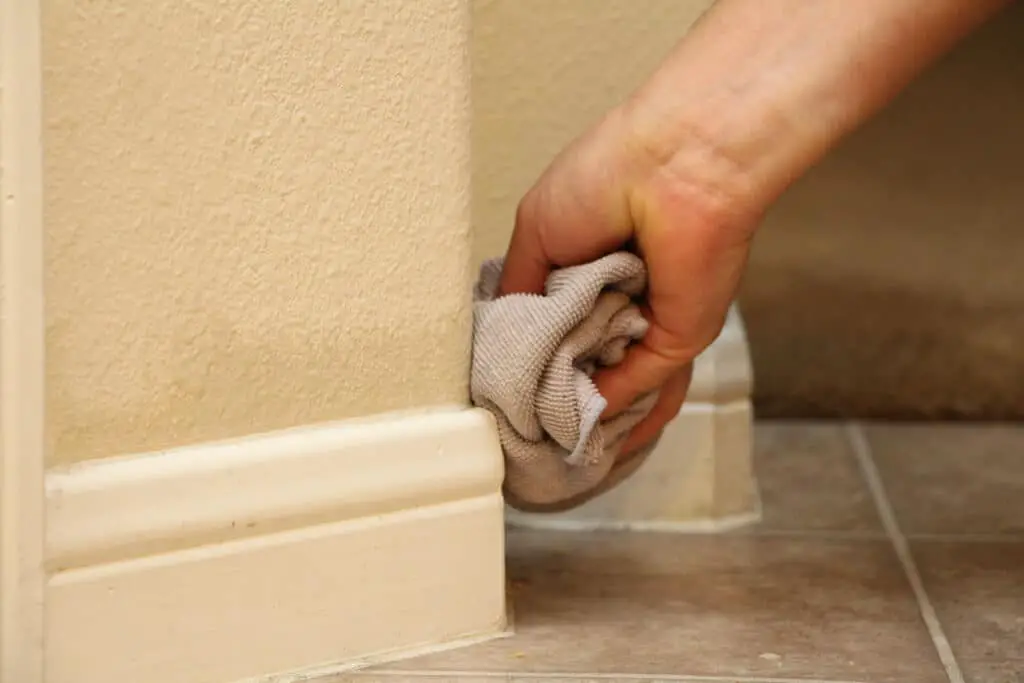
What is the purpose of baseboard?
Its purpose is to cover the joint between the wall surface and the floor. It covers the uneven edge of flooring next to the wall; protects the wall from kicks, abrasion, and furniture; and can serve as a decorative molding.
Wall Protection: One of the primary functions of baseboards is to protect the bottom portion of the interior walls from damage. They act as a barrier against scuffs, scratches, and impacts caused by furniture, vacuum cleaners, and foot traffic. Without baseboards, walls would be more vulnerable to wear and tear, leading to unsightly marks and potential repairs.
Concealing Gaps: Baseboards conceal the joint between the floor and the wall, hiding any uneven or unfinished edges. They create a neat and finished look, covering any gaps that may exist due to variations in floor height, wall imperfections, or construction discrepancies.
Covering Wiring and Cables: Baseboards can be designed with a channel or space behind them, providing a discreet way to conceal electrical wiring, phone cables, or other utilities that run along the base of the walls. This not only enhances the aesthetics of the room but also minimizes the risk of tripping hazards.
Aesthetic Enhancement: Baseboards play a crucial role in tying together the overall interior design of a space. They create a visual transition between the floor and walls, enhancing the overall appearance and providing a cohesive and polished look to the room.
Defining Spaces: Baseboards help define the boundaries of a room and can be used to differentiate between different areas or functions within a space. They add a sense of structure and order, making a room feel complete and well-designed.
Do homes need baseboards?
Lots of homes have baseboards, but you have to know if yours need one as well. With the advancements of interior design materials, most professionals see little need for having baseboards installed. However, many individuals want these fixtures in their homes as they offer visual benefits and protect against damages.
Baseboards cover the joint between the floor and the wall, concealing any uneven or unfinished edges. They create a neat and finished appearance, hiding any gaps that may exist due to variations in floor height, wall imperfections, or construction discrepancies. This helps create a visually appealing and cohesive look in the room.
Baseboards play a crucial role in tying together the overall interior design of a space. They add a finishing touch to the room, enhancing the overall aesthetics and providing a polished look to the interior. Baseboards come in various styles, sizes, and materials, offering homeowners an opportunity to express their unique tastes and complement their interior decor.
Baseboards can be designed with a space behind them to discreetly hide electrical wiring, phone cables, or other utilities that run along the base of the walls. This not only improves the room’s appearance by concealing unsightly wires but also helps reduce tripping hazards and ensures a safer living environment.
Baseboards help define the boundaries of a room and can be used to differentiate between different areas or functions within a space. They add a sense of structure and order, making a room feel complete and well-designed.
Baseboards act as a barrier that prevents dust and debris from settling in the corner where the wall meets the floor. Regular cleaning of baseboards is relatively simple and can contribute to maintaining a cleaner and healthier indoor environment.
What are the benefits of baseboards?
The purpose of baseboards is to protect walls from scratches and scuffs and to provide a decorative finish to the room.
Baseboards help define the boundaries of a room and can be used to differentiate between different areas or functions within a space. They add a sense of structure and order, making a room feel complete and well-designed.
Baseboards act as a barrier that prevents dust and debris from settling in the corner where the wall meets the floor. Regular cleaning of baseboards is relatively simple and can contribute to maintaining a cleaner and healthier indoor environment.
With a wide variety of baseboard styles, materials, and finishes available, homeowners have the flexibility to choose baseboards that align with their design preferences and complement the overall aesthetics of their home.
In some cases, baseboards can act as a barrier to airflow, helping to regulate indoor temperatures. Additionally, they can provide a measure of protection against minor water spills or moisture seepage from the floor.
Baseboards can also cover any gaps that may occur between the flooring and the wall due to the natural expansion and contraction of certain flooring materials.
Do all walls have baseboards?
You could opt to not have any baseboards at all. This is recommended if you are going for a very contemporary look with clean uninterrupted lines. Opting to not have any baseboards will keep your design simple and modern. The only downside is a loss of protection for your walls from brooms and vacuums.
In industrial or loft-style interiors, exposed concrete or brick walls are often celebrated and left bare, without the need for baseboards. The raw and minimalist appeal of such spaces negates the necessity of traditional wall trims. With a wide variety of baseboard styles, materials, and finishes available, homeowners have the flexibility to choose baseboards that align with their design preferences and complement the overall aesthetics of their home.
Ultimately, the inclusion or exclusion of baseboards is a matter of personal preference. Some homeowners may simply prefer the look of walls without baseboards, while others appreciate the practical benefits they offer.

Conclusion
Remember, safety should always be a priority when working on any home repair project, so be sure to follow the safety tips and guidelines provided in this guide. Repairing your baseboards not only improves the overall appearance of your living space but also protects your walls from damage and helps maintain the value of your property. Plus, DIY repairs can save you money and provide a sense of accomplishment.
As you progress through the fix baseboard repair process, don’t be afraid to get creative and try out different finishing techniques to match your interior decor. Experimenting with colors and textures can transform a simple repair into an opportunity to add a personal touch to your home. Now armed with the knowledge and confidence to fix baseboard issues, you can take on this project with ease. Remember, practice makes perfect, and the more you familiarize yourself with these repair techniques, the more skilled you’ll become.
Additionally, consider extending your newfound knowledge to other aspects of home improvement. By mastering baseboard repairs, you’ve acquired valuable skills that can be applied to other trim work and carpentry projects around your home. This newfound confidence and experience will empower you to take on a wide range of DIY tasks and save money on hiring professionals.



